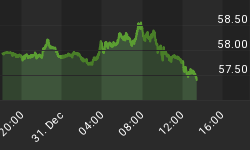Industrial production had another weak month. October came in at 0.0% and September was revised from +0.1% to -0.2%.
The Fed blames the weather.
Bloomberg Econoday says the headline number isn't as bad as it looks.
I suggest the numbers are far worse than they look at first glance, and the weather has nothing to do with it.
HighlightsThe headline isn't as bad as it looks as the manufacturing component of the industrial production report moved forward for a second month. Industrial production was unchanged in October with September, reflecting downgrades to both utility and mining production, revised a sharp 3 tenths lower to minus 0.2 percent. But manufacturing volumes firmed again, up 0.2 percent for a second straight month.
Vehicle production was very strong in October, up 0.9 percent to extend a long line of impressive gains. Year-on-year, vehicles are up a very solid 5.0 percent and are eclipsed only by the 6.7 percent gain for the selected hi-tech component which rose 1.0 percent in October to extend its run of impressive gains. Another positive is a 0.2 percent gain for business equipment which has otherwise been weak most of the year.
September's mining output is revised to a 0.4 percent decline from an initial 0.4 percent gain. But October was a very good month for the sector as output jumped 2.1 percent for the largest monthly increase in 2-1/2 years and reflecting gains for coal. Mining's year-on-year rate, however, remains well underwater at minus 7.0 percent. Utilities output, reflecting the nation's unseasonably warm weather, fell 2.6 percent in October with September revised to minus 3.0 percent from an initial minus 1.0 percent.
Overall capacity utilization fell 1 tenth in the month to 75.3 percent though manufacturing, once again, is positive, up 1 tenth to 74.9 percent. The factory sector has been flat all year but there have been recent signs of life, from this report as well as regional reports including from the Philly Fed whose November's data will be posted tomorrow.
WSJ Blames the Weather
The Wall Street Journal reports U.S. Industrial Production Flat in Warmer-Than-Usual October.
"Utilities production dropped sharply, offsetting modest gains in factory output" says the Journal.
"Oil and commodity prices have somewhat recovered, and our business in heavy-industry markets generally appears to have stabilized," said Blake Moret, chief executive at Rockwell Automation Inc., on a call with analysts last week. "Current forecasts call for improved global GDP and industrial production growth rates, as well as higher levels of global capital expenditures. We therefore expect improvement to continue."
But soft spots persist across the economy. Matt Farrell, chief executive at consumer-goods manufacturer Church & Dwight Co., told analysts earlier this month that while unemployment is steady, overall growth has been slow and families are facing rising health-care costs.
"I wouldn't say it's the best outlook for the consumer," he said.
Rising factory output "suggests that the sector is finally starting to see the benefits of the recent pick-up in global demand and the relative stability of the dollar since the start of the year," said Andrew Hunter, U.S. economist at Capital Economics, in a note to clients. "That said, the sharp rise in the dollar since Donald Trump's election victory last week may in time provide a new headwind, suggesting that any further recovery in manufacturing activity is likely to be gradual at best."
Fed Blames the Weather
The Fed blamed the weather in its Industrial Production and Capacity Utilization – G.17 report.
Industrial production was unchanged in October after decreasing 0.2 percent in September. Although the level of industrial production in September was the same as the previous estimate, revisions to the index for utilities raised the rate of change in total industrial production in August and lowered it in September. In October, manufacturing output increased 0.2 percent, and mining posted a gain of 2.1 percent for its largest increase since March 2014. The index for utilities dropped 2.6 percent, as warmer-than-normal temperatures reduced the demand for heating. At 104.3 percent of its 2012 average, total industrial production in October was 0.9 percent lower than its year-earlier level. Capacity utilization for the industrial sector edged down 0.1 percentage point in October to 75.3 percent, a rate that is 4.7 percentage points below its long-run (1972–2015) average.
Industrial Production and Revisions
Revisions in this series go back all the way to May. The month-by-month net effects look like this.
- September -0.3
- August +0.4
- July -0.1
- May +0.1
The total net effect is +0.1 so revisions changed little.
Industrial Production Durable Goods

Industrial Production Nondurable Goods

Industrial Production Business Equipment

Industrial Production Manufacturing

Industrial Production Motor Vehicles and Parts

Industrial Production Synopsis
- Business equipment stagnation.
- Consumer goods production at April 1997 level
- Manufacturing stagnation
- Motor vehicles and parts in the stratosphere
Worse Than Overall Numbers Suggest
Econoday says "The headline isn't as bad as it looks." The above charts tell a completely different story.
- US Production is highly dependent on, and highly leveraged to auto production.
- Consumer goods production is pathetic, at a level first seen in April 1997.
- Manufacturing has stalled as has business equipment.
- Business equipment has stalled and that is a reflection on the willingness of businesses to expand and thus future growth.
In addition, rising US dollar is likely to dampen exports, Finally, a global trade war is highly likely.

















